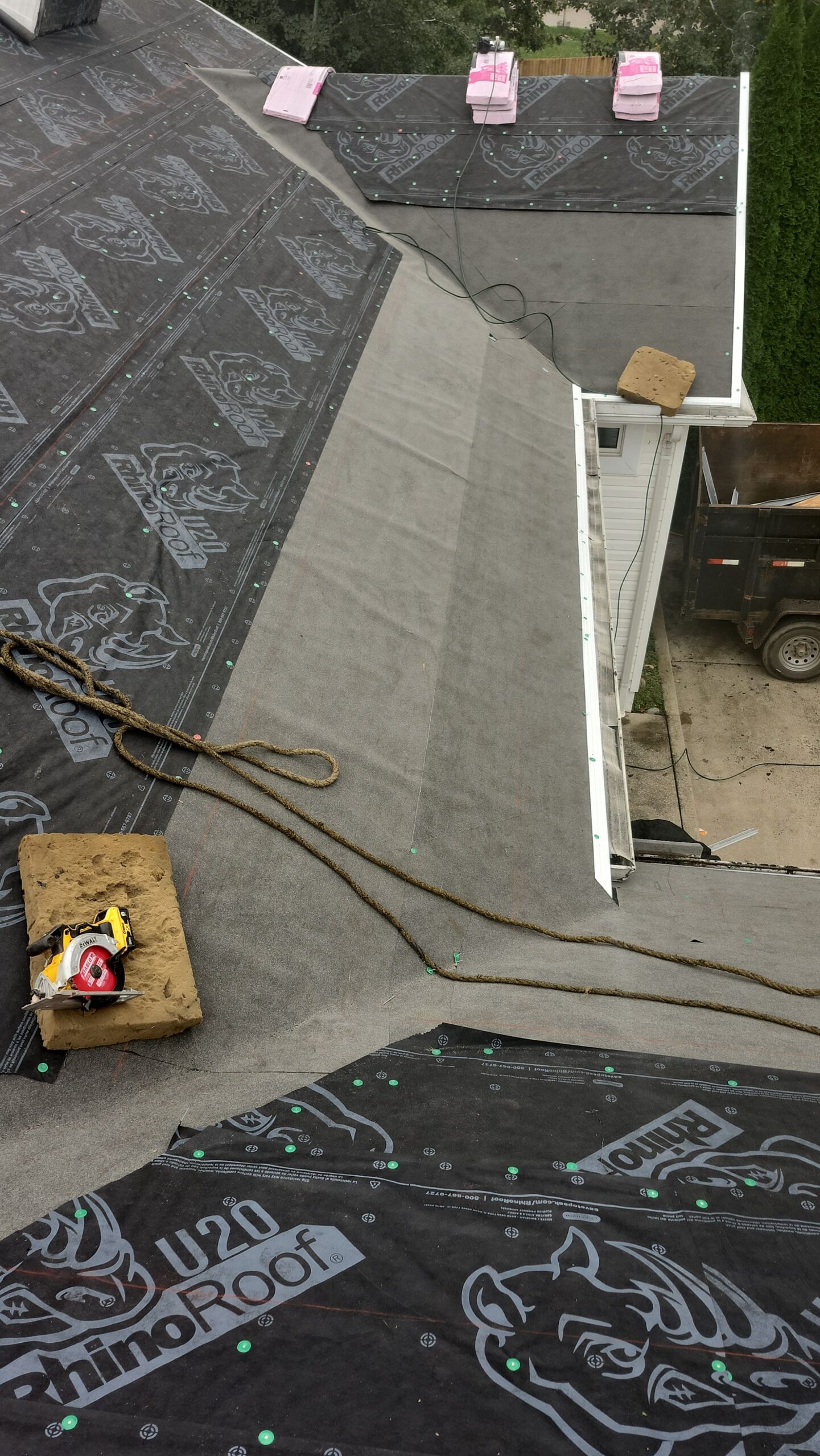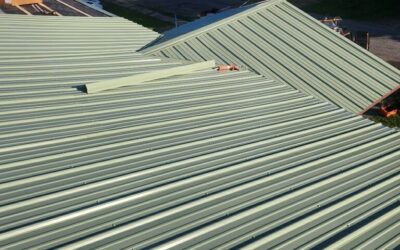Why Is Proper Attic Ventilation Important to Your Roof and Home?
Proper attic ventilation is one of the most overlooked yet critical aspects of maintaining a healthy roof and home. Without adequate ventilation, your roof’s lifespan can be drastically shortened, your energy bills can skyrocket, and your material warranties can be voided. Understanding the importance of attic ventilation can help homeowners prevent costly repairs and ensure their home remains comfortable year-round.
In this guide, we will explore:
- How attic ventilation affects your roof’s lifespan
- Why improper attic ventilation can void your material warranties
- How proper attic ventilation lowers your energy bills
- Signs that your attic isn’t properly ventilated
- How much ventilation your attic needs
- Steps to take if you have poor attic ventilation
How Attic Ventilation Affects Your Roof’s Lifespan
Attic ventilation plays a key role in extending the life of your roof. A poorly ventilated attic can lead to excessive heat buildup in the summer and moisture problems in the winter, both of which can cause serious damage to your roof.
The Consequences of Poor Ventilation on Your Roof:
- Excessive Heat Buildup: In the summer, a poorly ventilated attic can reach temperatures exceeding 150°F. This extreme heat can cause shingles to age prematurely, leading to cracks, curling, and failure.
- Moisture Accumulation: During the winter, warm air from the living space can rise into the attic. Without proper ventilation, moisture can accumulate, leading to mold growth, wood rot, and insulation damage.
- Ice Dams: In colder climates, inadequate ventilation can contribute to ice dams—ridges of ice that form along the roof’s edges. These dams prevent melting snow from draining properly, leading to leaks and damage to your roof structure.
Ensuring your attic has a well-balanced ventilation system will help keep your roof in optimal condition for years to come.
Improper Attic Ventilation Can Void Your Material Warranties
Many roofing manufacturers require proper attic ventilation to maintain warranty coverage on their products. If your attic is not ventilated according to the manufacturer’s guidelines, you could lose your warranty protection.
Why Manufacturers Require Proper Ventilation:
- Prevents Premature Aging: Excess heat and moisture can accelerate shingle deterioration, reducing their lifespan.
- Reduces Structural Damage: Moisture-related problems can weaken the roof deck and compromise structural integrity.
- Ensures Energy Efficiency: Proper ventilation helps roofing materials perform as intended, maintaining their insulating and protective properties.
Before installing a new roof, ensure that your attic ventilation system meets the manufacturer’s requirements to avoid losing your warranty coverage.
How Proper Attic Ventilation Lowers Your Energy Bills
Proper attic ventilation can significantly reduce your home’s energy costs. Without adequate ventilation, excessive heat can accumulate in your attic, forcing your air conditioning system to work harder to cool your home.
Benefits of Good Attic Ventilation on Energy Efficiency:
- Reduces Cooling Costs: A well-ventilated attic allows hot air to escape, reducing the strain on your air conditioning system.
- Prevents Heat Transfer: Proper ventilation keeps attic temperatures closer to the outside temperature, preventing excessive heat from seeping into your living space.
- Improves HVAC Performance: Your heating and cooling system will operate more efficiently, leading to lower energy bills and a longer system lifespan.
By optimizing attic ventilation, you can enjoy a more comfortable home while cutting down on energy expenses.
How Can You Tell If Your Attic Isn’t Properly Ventilated?
Many homeowners are unaware of ventilation problems until they start experiencing roof damage or high energy bills. Here are some key signs that your attic may not be properly ventilated:
Common Indicators of Poor Attic Ventilation:
- Excessive Heat in the Attic: If your attic feels like an oven in the summer, it likely lacks proper ventilation.
- Mold or Mildew Growth: Moisture accumulation in your attic can lead to mold and mildew, which can spread to other areas of your home.
- Peeling Paint or Wallpaper: High humidity levels due to poor ventilation can cause paint and wallpaper to deteriorate inside your home.
- Ice Dams in Winter: If you notice large icicles or ice dams forming on your roof, it may be a sign of poor attic ventilation.
- Warped or Rotten Wood: Moisture buildup in the attic can cause wood beams and rafters to weaken over time.
- High Energy Bills: A sudden increase in heating and cooling costs can indicate that your attic is not properly ventilated.
If you notice any of these signs, it’s important to address the issue before it leads to costly repairs.
How Much Ventilation Does Your Attic Need?
The amount of ventilation your attic needs depends on the size of your home and the type of roofing system you have. The general rule of thumb is to have at least 1 square foot of ventilation for every 150 square feet of attic space.
Types of Attic Ventilation:
- Intake Vents (Soffit Vents): These are installed along the roof’s eaves and allow fresh air to enter the attic.
- Exhaust Vents (Ridge Vents or Roof Vents): These vents allow hot, moist air to escape from the attic.
- Gable Vents: These are placed on the exterior walls of the attic and help with cross-ventilation.
- Powered Attic Fans: These electrically powered fans can boost ventilation in extreme conditions but should be used with caution to avoid negative air pressure.
To determine the ideal ventilation for your home, consult with a professional roofing contractor to assess your attic’s current system and recommend any necessary improvements.
What Should You Do About Poor Attic Ventilation?
If you suspect that your attic lacks proper ventilation, taking action immediately can help prevent further damage and costly repairs.
Steps to Improve Attic Ventilation:
- Schedule a Professional Inspection: A roofing contractor can assess your attic ventilation system and identify any deficiencies.
- Install Additional Vents: If your attic lacks sufficient intake or exhaust vents, adding more can help improve airflow.
- Clear Blocked Vents: Ensure that vents are not obstructed by insulation, debris, or roofing materials.
- Upgrade to a Balanced Ventilation System: Proper ventilation requires a balance between intake and exhaust vents for optimal airflow.
- Improve Insulation and Air Sealing: Address any insulation gaps and seal air leaks to prevent excess moisture and heat buildup in the attic.
By addressing ventilation issues promptly, you can extend the life of your roof, lower energy costs, and maintain a comfortable indoor environment.
Final Thoughts
Proper attic ventilation is essential for protecting your roof and maintaining a comfortable, energy-efficient home. Without adequate airflow, your roof can deteriorate prematurely, your energy bills can rise, and your manufacturer warranties may become void.
If you suspect your attic has poor ventilation, contact S&K Construction and Remodeling LLC. As an Owens Corning Preferred Contractor, we provide expert roofing services, including attic ventilation assessments and upgrades, throughout Northeast Ohio. Call us today for a consultation and ensure your home stays protected year-round.
 (440) 307-2060
(440) 307-2060


